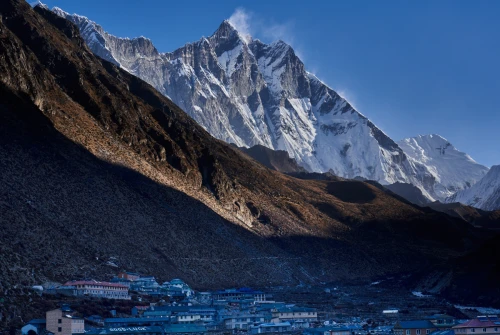Accommodation During the14 Days Everest Base Camp (EBC) Trek
The accommodation on the Everest base camp Trek is primarily in teahouses, which are basic mountain lodges run by local Sherpa families. These aren’t luxury hotels, but they offer a kind of comfort that can’t be found in star ratings. Warm smiles, hearty meals, and breathtaking views are standard. Teahouses vary depending on altitude; lower villages like Namche and Lukla offer more modern amenities, while higher stops like Lobuche or Gorakshep are simpler, colder, and more rustic.
Rooms are typically twin-sharing with wooden beds, foam mattresses, and thick blankets. Toilets range from Western flush types to squat toilets, especially at higher altitudes. Some teahouses offer hot showers (for an extra fee), Wi-Fi, and device charging, but as you climb higher, these luxuries become rare or expensive. The dining halls are the heart of every teahouse, a warm communal space where trekkers gather to share meals, tell stories, and plan their next day over mugs of ginger tea.
In recent years, luxury lodge trekking has also become available for those seeking a higher-end experience. In places like Phakding, Monjo, and Namche, upscale lodges provide en suite bathrooms, heated rooms, premium meals, and even spas. While these luxury options increase the budget, they offer extra comfort for those who want to combine adventure with a bit of indulgence. Whether you go basic or deluxe, what remains consistent is the feeling of being deeply cared for in the harshest yet most beautiful terrain on Earth.
Permits Required for the EBC Trek
Before setting foot onto the legendary trail to Everest Base Camp, it’s essential to ensure that you have the correct permits, as they are mandatory for all trekkers entering the Sagarmatha National Park and the Khumbu Pasang Lhamu Rural Municipality. These permits help regulate tourism, protect the fragile Himalayan ecosystem, and support local communities. Skipping these is not only illegal but also risks being turned away at various checkpoints along the trail.
1. Khumbu Pasang Lhamu Rural Municipality Permit
This permit replaces the former TIMS (Trekkers’ Information Management System) card for the Everest region and is issued by the local government in the Khumbu region. The cost of this permit is NPR 2,000 per person (approx. USD 15) and it must be purchased in Lukla or Monjo. If you're trekking with a guide or agency, they will usually handle this for you. It’s a one-time fee and remains valid for the entire duration of your trek in the Khumbu.
2. Sagarmatha National Park Entry Permit
This is the primary conservation permit, as the Everest trail falls within the boundaries of Sagarmatha National Park, a UNESCO World Heritage Site. The cost is NPR 3,000 per person (approx. USD 25) for foreign nationals and NPR 1,500 for SAARC nationals. This permit can be obtained at the Nepal Tourism Board office in Kathmandu or at the entrance gate in Monjo, just after Phakding.
If you happen to pass through Gaurishankar Conservation Area (in case you're trekking from Jiri or Salleri instead of flying into Lukla), then an additional GCAP permit is required. However, for the standard Lukla route, only the above two permits are necessary.
Important Notes:
- Carry multiple photocopies of your passport and passport-sized photos when applying.
- Keep permits in a dry and easily accessible place during your trek. Officials will check them at various checkpoints.
- These fees are used for trail maintenance, waste management, conservation efforts, and support to local communities, so you’re giving back as you trek.
While permits might seem like just paperwork, they are your gateway to one of the most pristine and regulated trekking regions in the world. Ensuring that you’ve sorted this out in advance or with your trekking company saves you time, hassle, and potential delays on the trail.
Cost of the Everest Base Camp Trek (From Budget to Luxury)
The cost of trekking to Everest Base Camp can vary widely depending on the level of comfort, support, and services you choose. Whether you're a budget traveler seeking the raw experience of the mountains or someone who prefers a bit of indulgence along the trail, there's an option for you. The range usually falls between USD $900 to $5,000+, and each level of cost reflects different styles of trekking from bare-bones independence to full-scale luxury.
Budget Trekking ($900–$1,300)
For those who are budget-conscious yet determined to experience Everest, it’s entirely possible to complete the trek at a modest cost. Budget trekking usually involves no-frills teahouse accommodations, simple local meals, and perhaps hiring only a porter or going solo without a guide. You’ll arrange your own permits, flights to Lukla, and logistics. This approach requires a high level of independence, preparation, and confidence in navigating mountain routes.
Typical costs break down like this:
- Round-trip Kathmandu–Lukla flights: ~$360
- Permits (Sagarmatha + Local): ~$50
- Meals and accommodation: ~$30–$40 per day
- Optional porter (~$20/day)
While this style is raw and affordable, it can be physically and mentally demanding, especially when facing altitude, uncertainty, or illness alone.
Standard Guided Trek ($1,500–$2,000)
The most popular and recommended way to trek Everest is through a standard guided package. These include airport transfers, flights, permits, a guide, porter, accommodation, and three meals per day during the trek. Your bags are carried, logistics are handled, and your local guide monitors your health and acclimatization along the way.
This approach is ideal for first-time trekkers, solo travelers, or those who want to enjoy the trail without worrying about the finer details. Trekking agencies based in Nepal offer both group departures and private options. Guides often add rich cultural context and can be the difference between a good trek and a great one.
Luxury Trekking ($2,500–$5,000+)
For those seeking extra comfort, luxury trekking in the Everest region is rapidly growing in popularity. This includes stays at high-end lodges (such as Yeti Mountain Home or Everest Summit Lodges), gourmet meals, and even helicopter returns from base camp or Namche. You'll still walk the same trails, but you'll rest your head on crisp linens, enjoy hot showers, heated rooms, and à la carte dining even at altitude.
Luxury treks are perfect for travelers who want the best of both worlds, adventure by day and comfort by night. They’re also ideal for older adventurers, couples on milestone trips, or families wanting added safety and convenience.
No matter your budget, what’s constant is the magic of the trail. The sunset on Everest doesn’t shine any brighter for those paying more, but a trek that fits your comfort level ensures you’ll enjoy each step with peace of mind.
What Views Can You Expect on the Everest Base Camp Trek?
The views on the Everest Base Camp trek are nothing short of breathtaking a visual symphony of rock, ice, sky, and snow. This trek isn’t just a walk to a destination; it’s a constantly evolving panorama of Himalayan scenery, dramatic valleys, roaring rivers, and ancient Sherpa villages that cling to the mountainside. At every turn, you’re greeted with postcard-perfect Everest Base Camp trek landscapes that feel too surreal to be real. No matter how many photos or documentaries you’ve seen, nothing prepares you for the actual sight of Mount Everest glimmering at sunrise.
From the very first day, the trail rewards trekkers with Everest Base Camp trek mountain views of snow-draped peaks like Kongde Ri and Thamserku. As we climb higher, the horizon opens to reveal Ama Dablam, often considered the most photogenic peak of the Khumbu. By the time we reach Namche Bazaar’s Everest viewpoint, we’re gifted with the first clear glimpse of Everest herself, peeking through the clouds in the distance. That single moment, even from afar, ignites awe and motivation in every trekker.
As the trail follows the Dudh Koshi River into the high Himalayas, the scenery shifts dramatically. You’ll witness sunset views over glaciers, frost-covered valleys in the early morning, and night skies filled with countless stars. Nearing base camp, the immense Khumbu Glacier and Icefall views dominate the landscape, stretching like a jagged silver road. The ultimate highlight comes when you ascend Kala Patthar (5,545m), one of the best viewpoints on the Everest Base Camp trek, where the entire Himalayan panorama unfolds Everest, Lhotse, Nuptse, and Pumori painted in gold and rose hues by the first light of day.
But the trek isn’t only about the iconic peaks. The Everest Base Camp trek scenery also includes lush rhododendron forests in spring, cascading waterfalls, and colorful prayer flags fluttering against the snow-capped backdrop. Monasteries like Tengboche provide not just cultural immersion but also unforgettable mountain views framed by spirituality. Even in quiet moments standing on a ridge with nothing but the sound of the wind there’s a sense of grandeur that can’t be explained, only felt.
Every step offers iconic Everest Base Camp trek photography spots and memorable perspectives, from sweeping valleys to close-up views of legendary peaks. Whether it’s the glittering Khumbu Icefall, the iconic outline of Ama Dablam, or the sunrise over Everest from Kala Patthar, these Everest Base Camp trek highlights make the journey one of the most scenic adventures in the world.
Do We Need Prior Trekking Experience to Trek to Everest Base Camp?
One of the most beautiful things about the EBC Trekking is that it doesn’t require technical climbing skills or prior mountaineering experience. This isn’t a climb,it's a high-altitude hike. That means no ropes, no harnesses, and no ice axes. What you do need is physical stamina, mental resilience, and respect for altitude. First-time trekkers frequently complete this journey safely and joyfully, especially when they prepare properly in the months leading up to the trek.
That said, trekking at high elevation is no walk in the park. The challenges here are not vertical cliffs but thin air, long days on your feet, and cold nights above 4,000 meters. If you've never trekked before, it’s wise to start training at least two to three months before your departure. Focus on cardio workouts (like hiking, jogging, or swimming), leg strength (squats, step-ups, lunges), and endurance. Weekend hikes with a loaded backpack will get you comfortable with the daily rhythm of the trail.
Equally important is mental preparation. The Everest region tests your patience with unpredictable weather, basic toilets, and simple food. But these minor discomforts pale in comparison to the joy of watching the sun rise behind Everest or sipping tea beside a crackling stove in a remote village. If you're the kind of person who thrives on challenge and appreciates slow, meaningful travel, prior experience is helpful but not mandatory. With a trusted guide, proper acclimatization, and an open heart, even a first-time trekker can walk proudly to base camp.
Culture and Heritage Along the Everest Base Camp Trek
The Everest Base Camp Trek isn’t just a walk through towering peaks; it's a passage through one of the most culturally rich regions of Nepal. As we move higher into the Khumbu Valley, we step into the world of the Sherpa people, a resilient mountain community whose lives are intricately woven with Tibetan Buddhism, deep respect for nature, and a tradition of mountaineering that goes back generations. Every village, every stupa, and every string of fluttering prayer flags tells a story. The spiritual energy along this trail is tangible, grounding, and sacred.
One of the most moving aspects of the trek is encountering the Tibetan-Buddhist heritage that saturates the trail. We pass by countless mani walls (prayer stones carved with sacred mantras), chortens (Buddhist shrines), and prayer wheels turned by hand or water. The air is often filled with the soft sound of chants or the rhythmic spinning of prayer wheels. In villages like Tengboche, Pangboche, and Khumjung, ancient monasteries still serve as the beating spiritual heart of Sherpa life. The Tengboche Monastery, in particular, offers a powerful experience. Watching the monks perform evening puja with Everest towering silently behind is something that stays with you forever.
The Sherpa people are known globally for their mountaineering prowess, but their identity is so much deeper than climbing Everest. They are farmers, yak herders, and entrepreneurs. Their homes are warm with hospitality, their kitchens rich with stories, and their values rooted in community, compassion, and resilience. Sharing tea with a Sherpa host, hearing stories of yaks, yetis, and the first Everest summits, or even just exchanging a smile with a passing porter—all of these are moments where culture comes alive. This trek teaches us that even in one of the most extreme environments on Earth, people live in harmony, with each other, with the mountains, and with the divine.
Walking the EBC trail isn’t just a physical journey; it’s a cultural pilgrimage. The mountains are grand, yes, but it's the heritage of the people who live here that makes this journey unforgettable. From the carved prayer stones to the scent of juniper smoke during rituals, the Everest region invites us not just to see, but to feel, to reflect, and to connect with a way of life that has endured in silence and simplicity for centuries.
What Makes Everest Base Camp Unique Compared to Other Popular Treks?
There are many breathtaking treks in Nepal; the Annapurna Circuit, Manaslu Circuit, Langtang Valley, and Mardi Himal all offer incredible scenery and cultural immersion. But the Everest Base Camp Trek holds something intangible, something almost mythical. What makes EBC truly unique isn’t just that it leads to the base of the world’s tallest mountain; it’s that the entire journey feels like a pilgrimage, a once-in-a-lifetime rite of passage where nature, culture, and human aspiration collide most profoundly.
First, there's the sheer grandeur of the landscape. Other treks may offer rolling hills, terraced farmlands, or glimpses of Himalayan peaks, but Everest Base Camp places you right in the heart of the world’s tallest mountains. The peaks here aren’t distant, they tower above you, close enough to feel their presence in your chest. Nuptse, Lhotse, Ama Dablam, Pumori, and, of course, Everest itself dominate your field of vision for days. Add to that the stark beauty of the Khumbu Glacier, the lunar landscape of Gorakshep, and the dramatic ridge of Kala Patthar, and you have a trekking experience that’s visually and emotionally overwhelming in the best possible way.
Second, EBC is steeped in real-life mountaineering history. This isn’t a trail invented for tourists; it’s the same route walked by legends like Tenzing Norgay and Sir Edmund Hillary, and today by climbers attempting Everest’s summit. Every rock, every footprint along the way feels like it carries the weight of stories, of triumph, loss, and unshakable courage. Standing at base camp, surrounded by colorful expedition tents and massive seracs of ice, you don’t just feel like a trekker, you feel like you're standing at the threshold of greatness. No other trek offers that same raw connection to human adventure.
Finally, the Sherpa culture and spiritual atmosphere along the Everest trail are more pronounced than on any other trekking route in Nepal. The Khumbu region has a higher concentration of active monasteries, spiritual landmarks, and prayer-inscribed stones than most other trails. There’s a spiritual charge in the air, a reverence for the mountains as sacred beings, not just geological formations. And the people, stoic, kind, and deeply rooted in their traditions, make this more than a hike. It becomes a journey not only through the highest landscapes on Earth but also through the depths of human resilience, faith, and humility.
In short, Everest Base Camp stands alone. It's not just popular because of the fame of Everest; it's beloved because it offers a transformational experience that no other trek replicates. It’s raw, it’s real, and it’s unforgettable.
Best time to trek Everest Base Camp
Choosing the best time to trek Everest Base Camp is crucial; it can mean the difference between walking under crystal-clear skies or being trapped in clouds and rain. The two best seasons for the Everest Base Camp trek are pre-monsoon (spring) and post-monsoon (autumn). These months offer the most stable weather, excellent visibility, and the safest trekking conditions in the high Himalayas. If you’re wondering when to trek Everest Base Camp, these are the most recommended windows.
Everest Base Camp Trek in Spring (March to May)
Spring (March to May) is often considered one of the best times for Everest Base Camp trekking. The weather is warming up after the long winter, and the days are generally dry and clear. What makes this season extra special is the rhododendron bloom, which sets the lower valleys ablaze with red, pink, and white flowers. You’ll also see more mountaineering expeditions setting up at base camp, giving the area a buzzing, high-energy atmosphere.
The Everest Base Camp weather in spring is relatively stable, with manageable temperatures at higher altitudes if you have the right gear. Clear mornings usually offer spectacular mountain views, making this an ideal season for both trekking and photography. If you compare Everest Base Camp in March vs April, March is quieter with colder nights, while April and May are warmer but busier.
Everest Base Camp Trek in Autumn (September to November)
Autumn (September to November) is the most popular season for Everest Base Camp trek and for good reason. The monsoon rains have cleared the dust and haze, leaving pristine skies and sharp Himalayan views. Days are cool, skies are mostly blue, and the trail is alive with trekkers from around the world.
This period is often regarded as the best season for Everest Base Camp trek because of stable conditions, incredible visibility, and pleasant daytime temperatures. October is peak season, while November brings cooler but clearer skies. The downside is that the trail and teahouses can get crowded, so advance bookings are often essential.
Everest Base Camp Trek in Winter (December to February)
While it’s possible to trek in Everest Base Camp during winter, you’ll need to be well-prepared for freezing temperatures, snow-covered trails, and limited lodge services at higher altitudes. Everest Base Camp trek in December is beautiful but cold, while January and February see even harsher conditions. For those who enjoy solitude and don’t mind extreme cold, this can still be a rewarding time with fewer trekkers.
Everest Base Camp Trek in Monsoon (June to August)
The Everest Base Camp trek in monsoon (June to August) is generally not recommended due to heavy rain, muddy trails, leeches, and frequent flight delays. Visibility is often poor, hiding the dramatic Himalayan peaks behind clouds. However, if solitude is your main goal, you may still enjoy trekking in June before the rains intensify.
Shoulder Months – A Great Alternative
If you want to avoid the heavy crowds of peak season, consider the shoulder months. Everest Base Camp trek in late February, early June, or late November offers a perfect balance of decent weather, manageable trail conditions, and fewer trekkers. This is also a good time for those who want to save on costs while still experiencing favorable trekking conditions.
Electricity, Charging, and Cost Along the Trail
Yes, there is electricity available throughout most of the Everest Base Camp trek, but it becomes scarcer and more expensive as you climb higher. In lower villages like Lukla, Phakding, and Namche Bazaar, electricity is often available through the local grid or solar power, and most teahouses provide charging facilities either in the rooms or in common areas.
As you ascend, especially above Dingboche, Lobuche, and Gorakshep, power sources are usually solar-powered and very limited. Charging electronics here is often offered for a fee, usually based on what you're charging. The average cost to charge a smartphone or camera battery ranges from:
- $2–$5 USD in mid-altitude villages
- $5–$10 USD at higher lodges like Gorakshep
To save money and avoid running out of battery, it’s wise to bring a power bank (10,000–20,000 mAh) and consider solar chargers or extra batteries. Also, put your phone on battery saver mode, turn off background apps, and avoid unnecessary usage. Keep in mind that Wi-Fi is not always reliable, especially above Namche. Many lodges offer Wi-Fi for a charge, but don’t expect fast speeds or consistent signals.
And yes, plugs in the Everest region are usually two-prong (Type C and D), so bring a universal adapter if your devices require a different plug style.
Drinking Water on the Everest Base Camp Trek
Staying hydrated on the Everest Base Camp trek is critical at high altitude, and thankfully, water is widely available along the trail—but how you get it and treat it makes all the difference. Most villages have tap water, springs, or boiled water provided by teahouses and lodges. However, untreated tap water on the Everest Base Camp trek is not safe to drink directly. Even if it looks clean, it may contain bacteria, parasites, or contaminants from livestock and human activity, making water purification on the Everest Base Camp trek essential.
You’ll typically have three main options for safe drinking water on the Everest Base Camp trek:
1. Bottled Mineral Water
Bottled water is available in nearly every lodge and shop, but it’s expensive and unsustainable. A 1-liter bottle may cost $1–$3 in lower areas and rise to $4–$5 at high altitudes like Gorakshep. While convenient, relying on bottled water on the Everest Base Camp trek contributes to plastic waste, so trekkers are encouraged to consider more sustainable options.
2. Boiled Water
Most tea houses offer boiled water on the Everest Base Camp trek, sometimes free but usually for a small charge. This is a safe and commonly used option, though availability can be limited during busy evenings. Carrying a reusable bottle makes it easy to refill with boiled water.
3. Purified or Filtered Water
The most recommended option for trekkers is purified water on the Everest Base Camp trek. Carry a reusable bottle along with water purification tablets, UV sterilizers (like SteriPEN), or portable water filters (such as Sawyer or LifeStraw). This is the most sustainable and cost-effective way to ensure safe hydration on the Everest Base Camp trek, while reducing reliance on single-use plastic.
How much to drink?
It’s advised to drink 3–4 liters of water per day to stay hydrated and help prevent altitude sickness. Dehydration worsens the effects of Acute Mountain Sickness (AMS), so even if you don’t feel thirsty, keep sipping. Adding electrolytes or rehydration salts to your water is another useful tip for maintaining energy levels during long climbs.

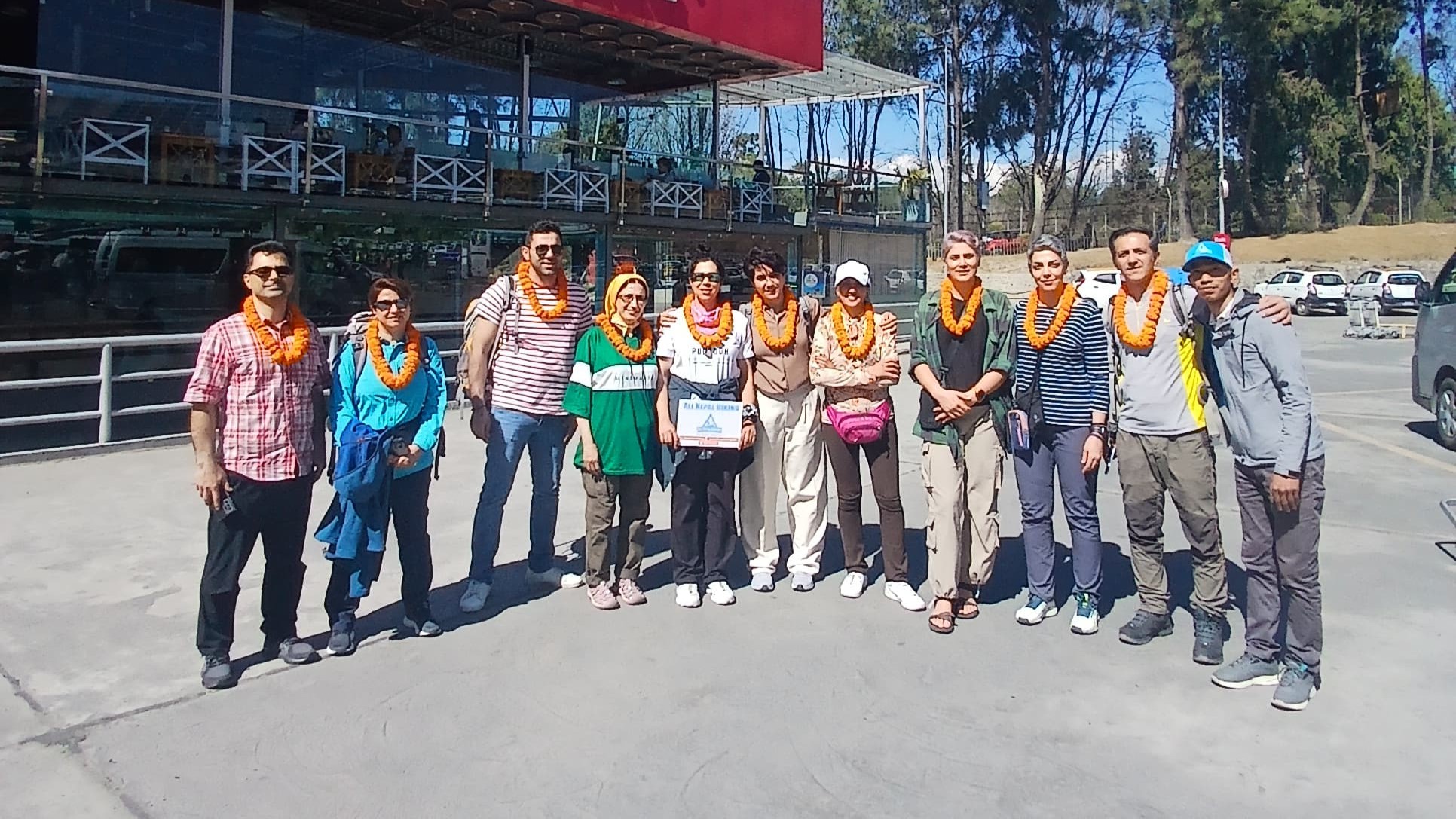

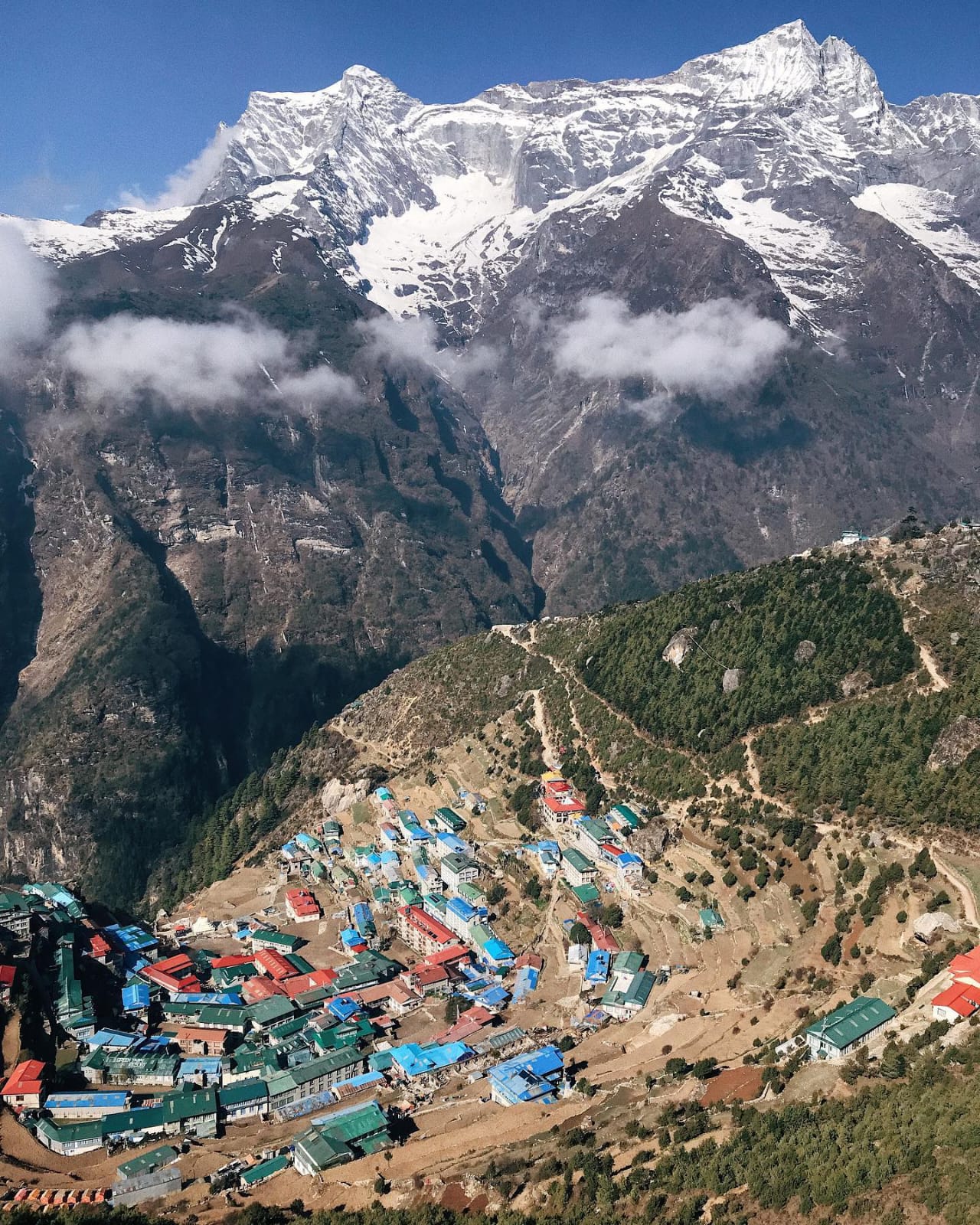
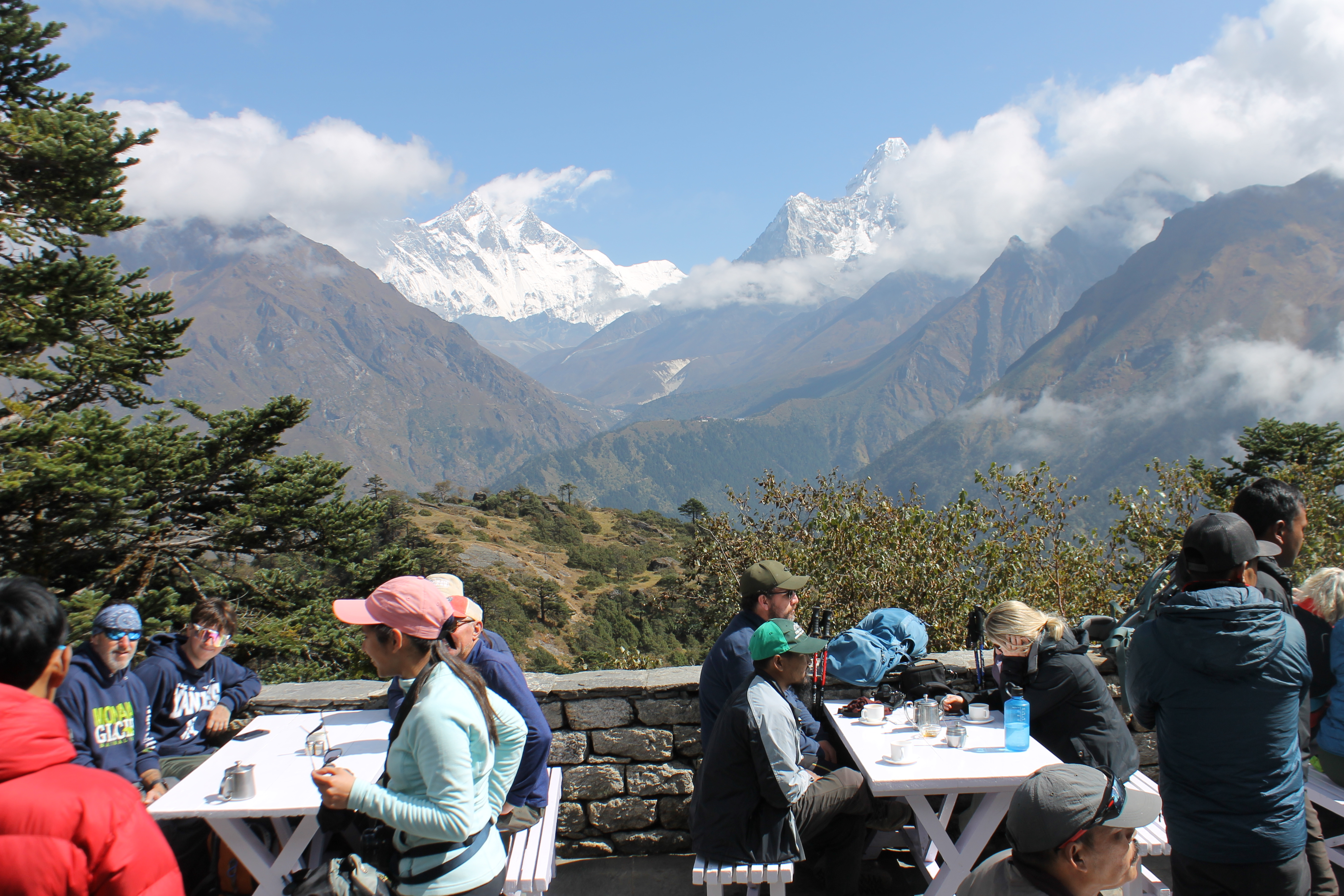
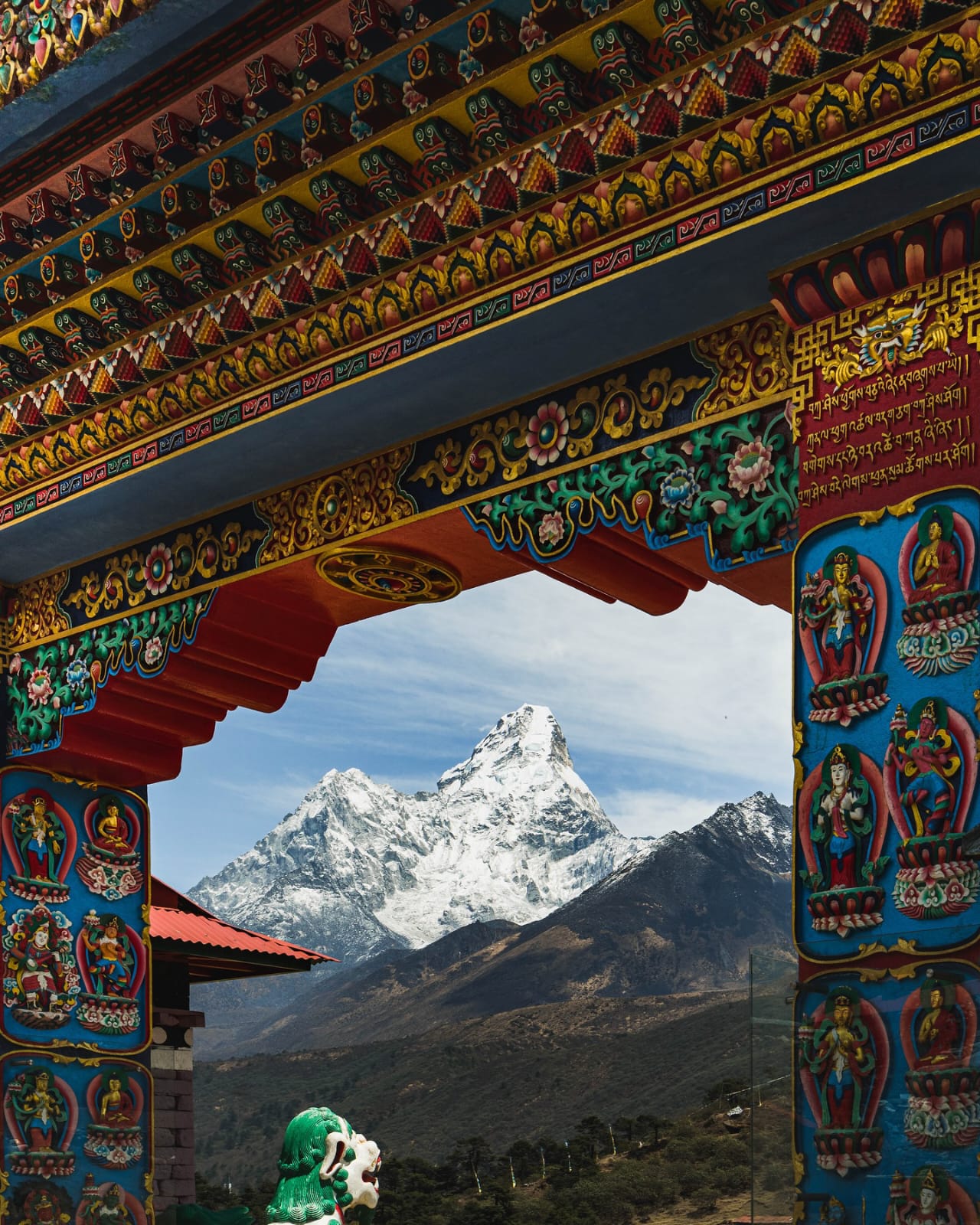

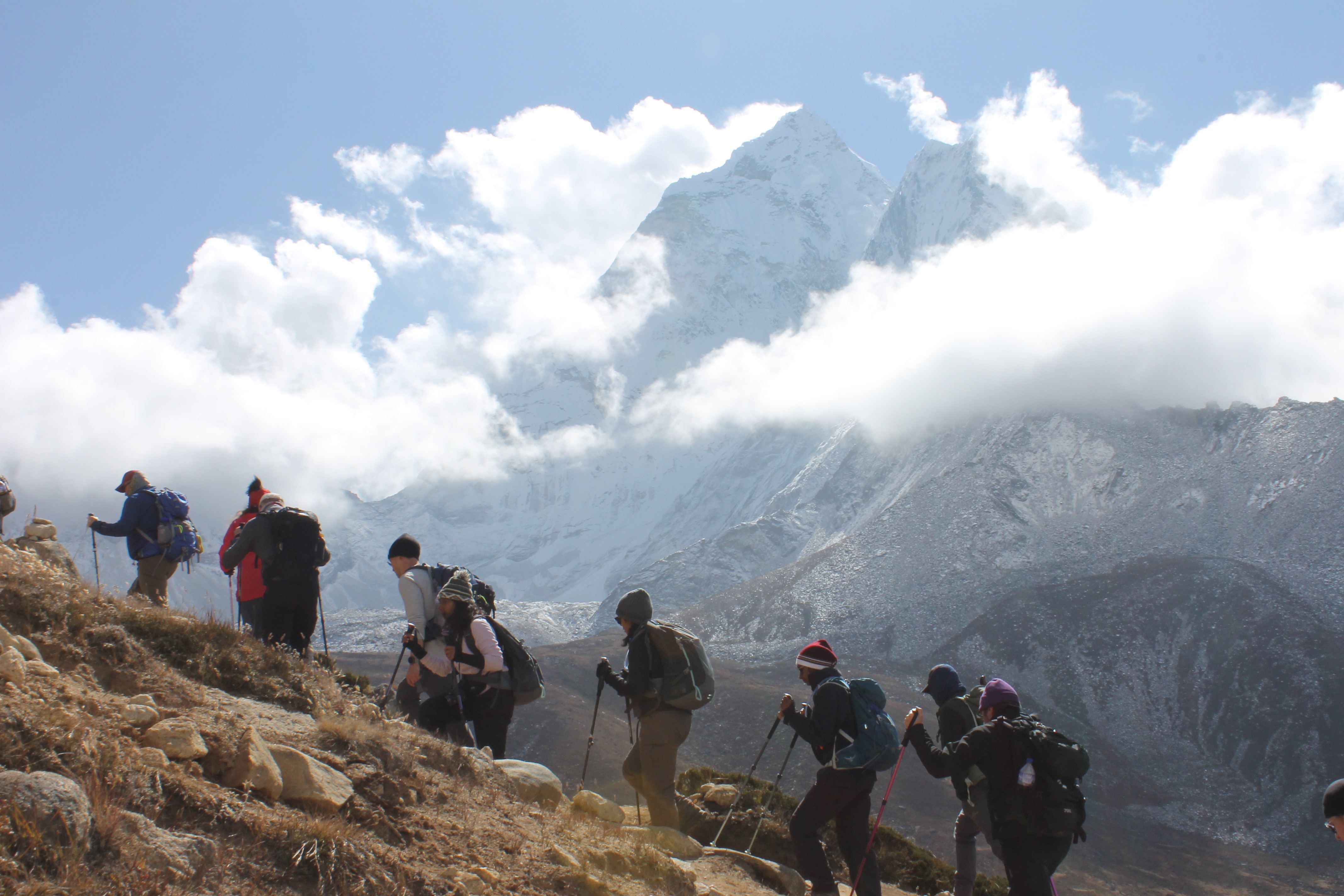
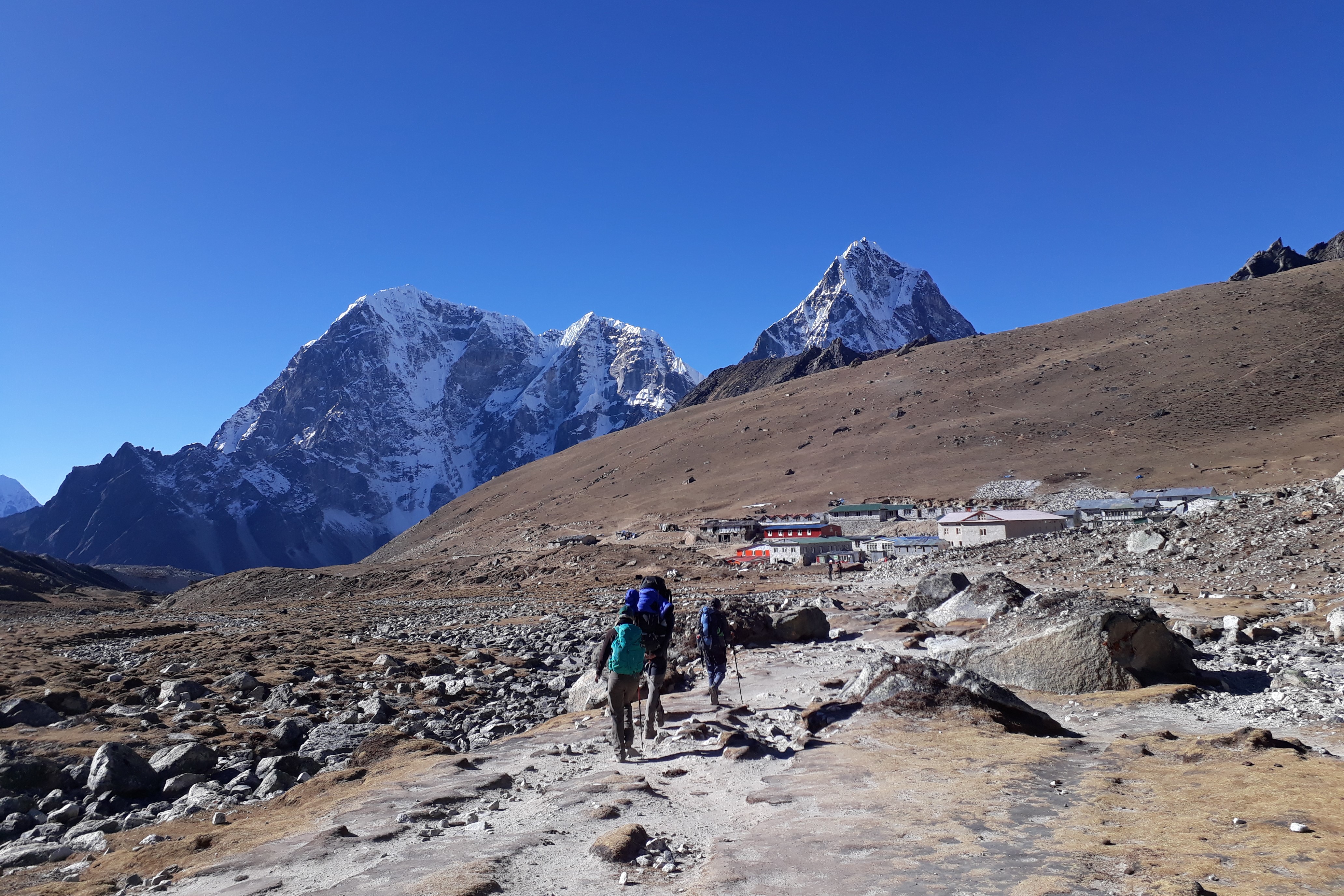


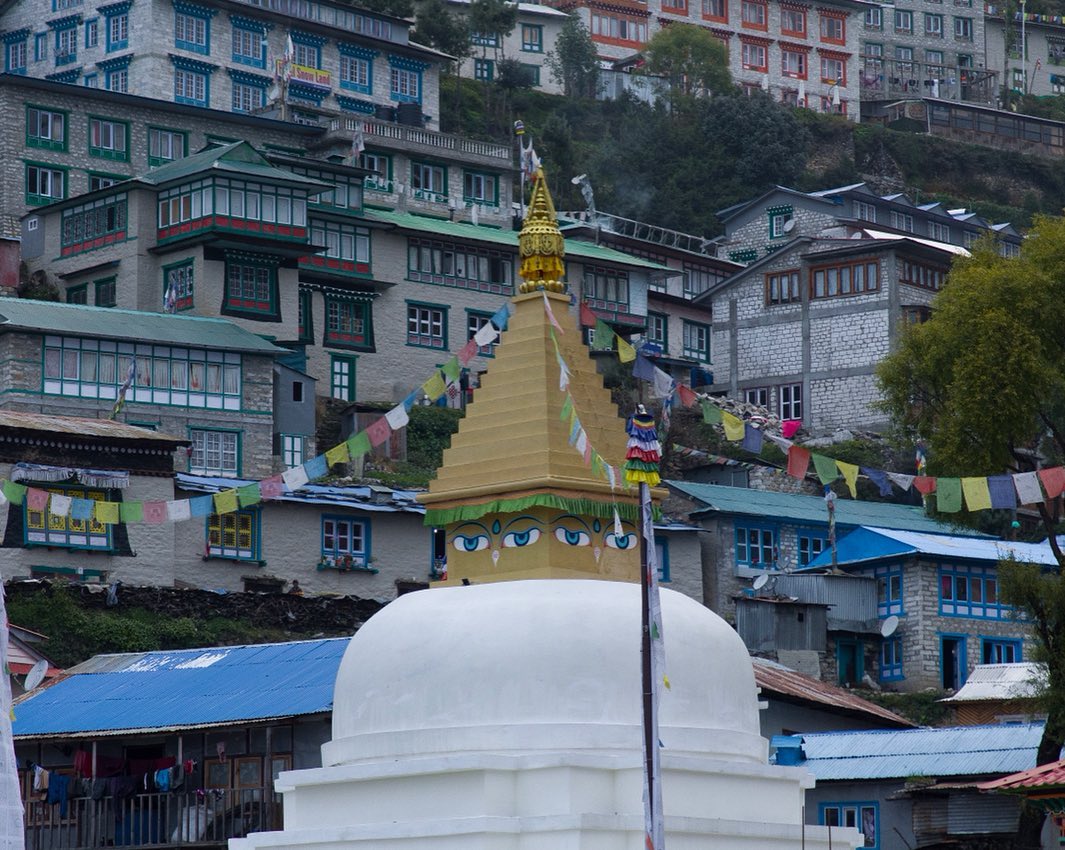
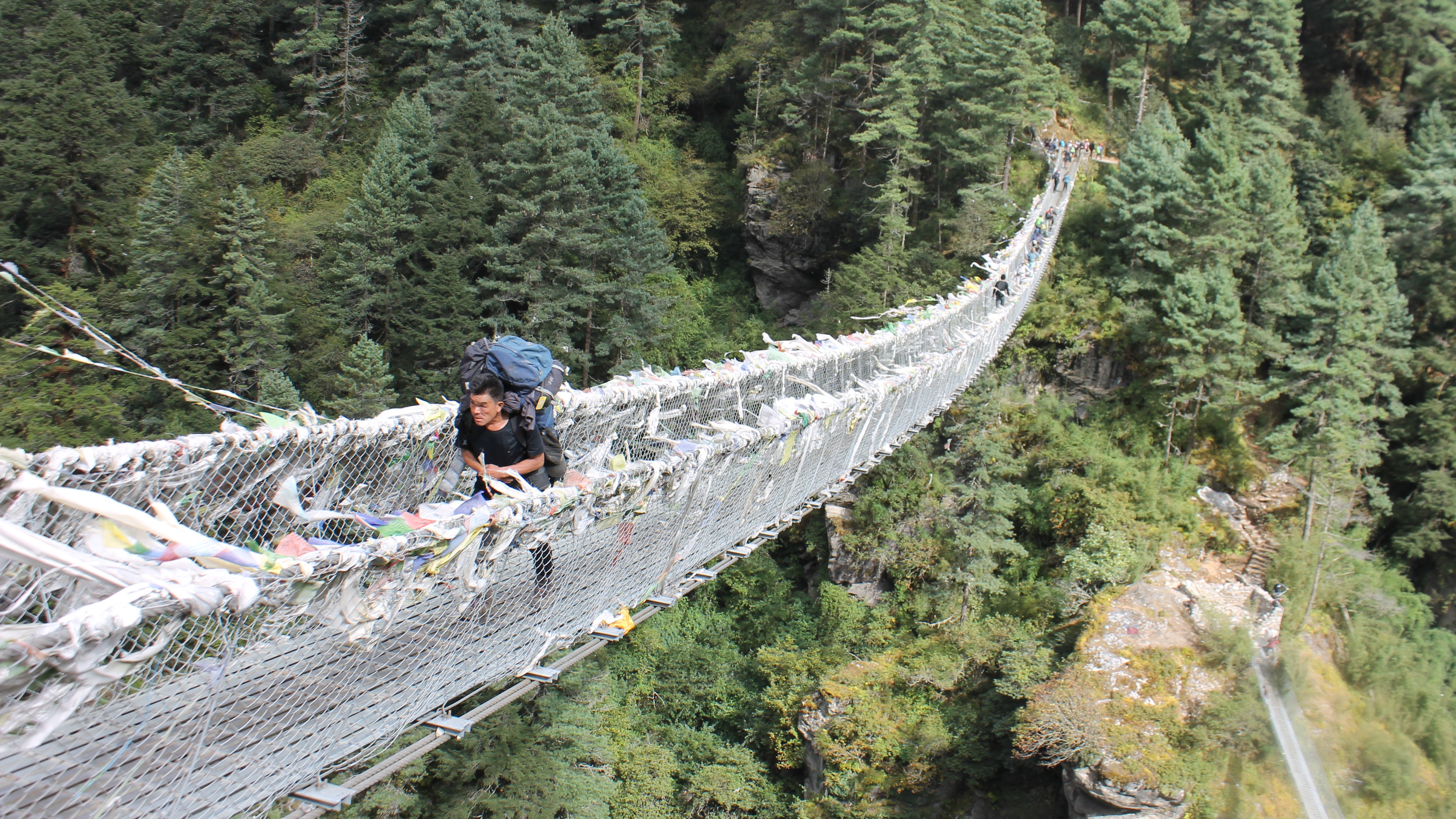
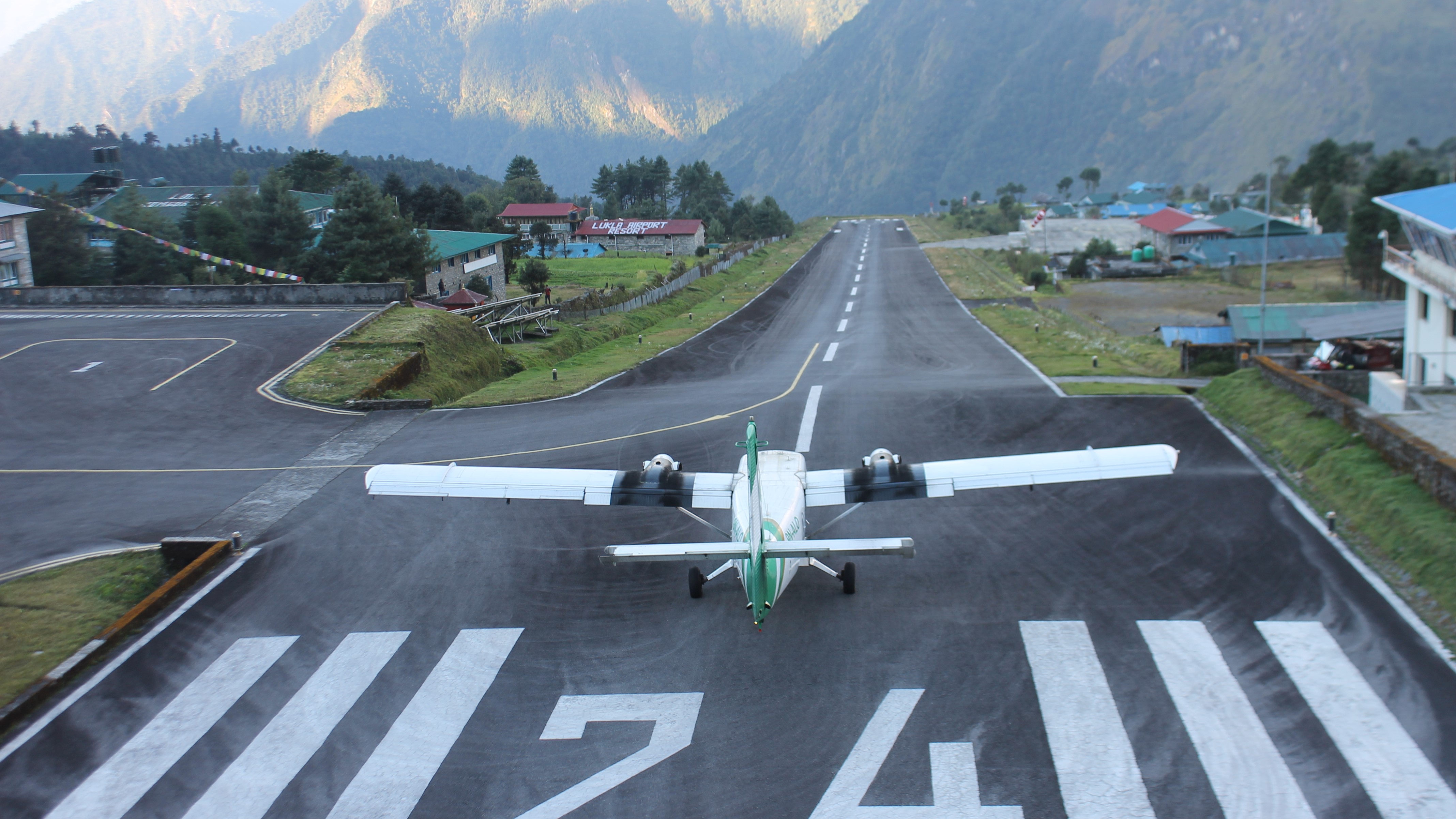
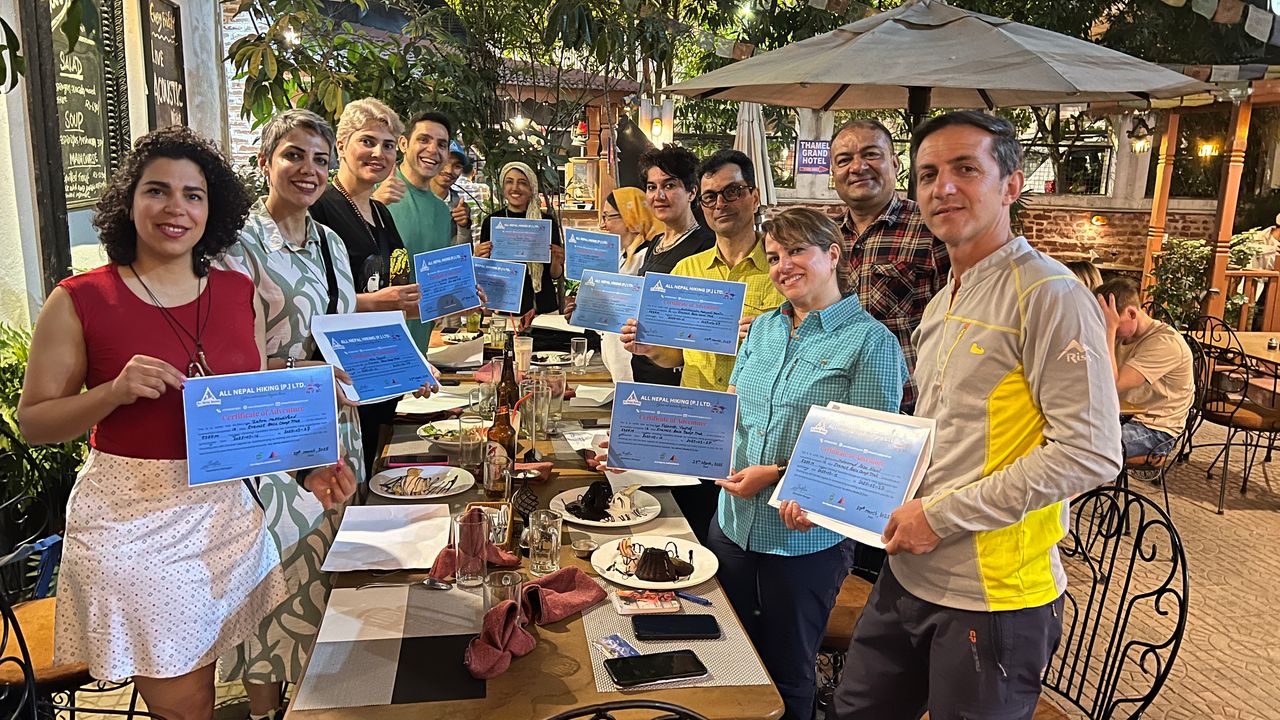

 based on 9 reviews
based on 9 reviews